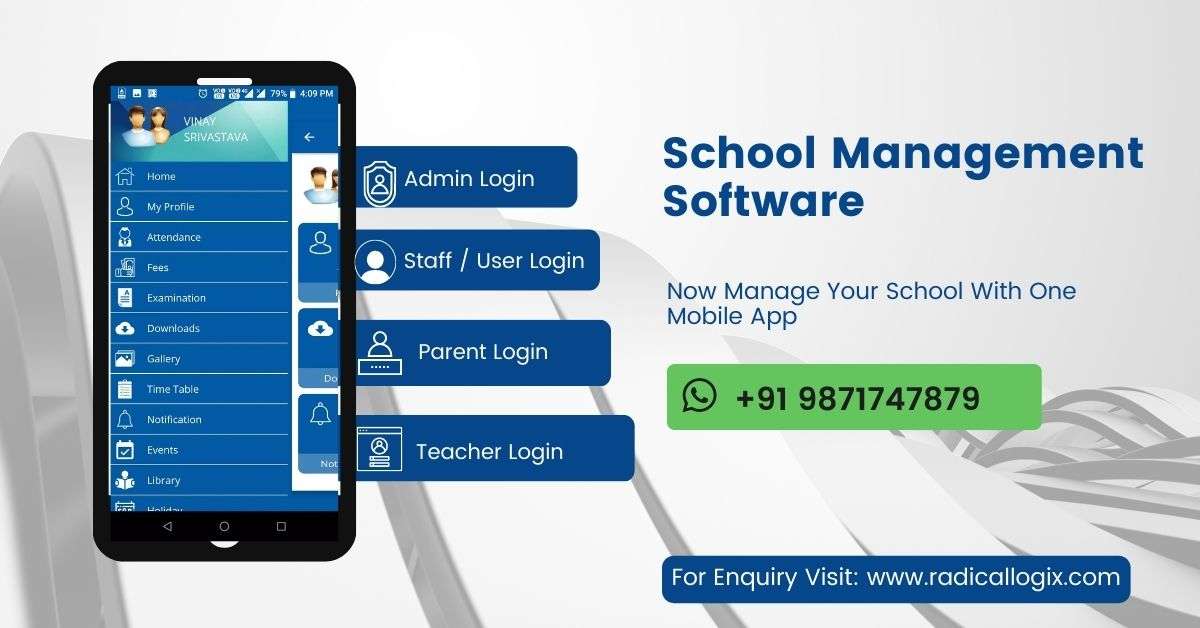In the ever-evolving landscape of education, teachers play a pivotal role in shaping the future of students. However, the administrative responsibilities that come with teaching can often be overwhelming, leaving educators with limited time to focus on their core task – teaching. The advent of technology has brought forth solutions to streamline these administrative tasks, with school management software apps emerging as a game-changer. This article explores the ways in which school management software assists teachers in alleviating their workload, enabling them to concentrate on what truly matters – imparting knowledge and fostering the growth of their students.
Efficient Communication Channels:
One of the primary challenges teachers face is maintaining effective communication with students, parents, and colleagues. Traditional methods, such as paper-based communication and face-to-face meetings, can be time-consuming. School management software simplifies this process by providing a centralized platform for communication. Through instant messaging, announcement features, and email integration, teachers can efficiently communicate with parents and students, reducing the need for time-consuming physical meetings.
Automated Attendance Tracking:
Taking attendance is a routine task for teachers, but it can be time-consuming, especially in large classrooms. School management software automates attendance tracking, allowing teachers to mark attendance digitally. This not only saves time but also reduces the chances of errors associated with manual recording. Additionally, automated attendance systems often come with features that notify parents about their child’s presence or absence, keeping them informed in real-time.
Streamlined Gradebook Management:
Grading assignments, quizzes, and exams is a critical aspect of teaching that demands accuracy and efficiency. School management software offers a digital gradebook that allows teachers to input grades seamlessly. The software calculates averages, generates reports, and provides insights into student performance. This automation not only reduces the time spent on manual calculations but also enhances the accuracy of grade recording.
Assignment and Homework Management:
Teachers often spend a significant amount of time distributing, collecting, and grading assignments. School management software simplifies this process by providing a digital platform for assigning and submitting homework. Teachers can create, distribute, and collect assignments electronically, making it easier to track progress, provide feedback, and manage deadlines. This feature not only reduces paperwork but also promotes a more organized and efficient workflow.
Centralized Resource Management:
Gathering and organizing teaching resources, including lesson plans, study materials, and reference documents, can be a time-consuming task. School management software centralizes these resources, allowing teachers to access and share materials with ease. This not only saves time spent searching for materials but also promotes collaboration among educators, fostering a more dynamic and resourceful teaching environment.
Parent-Teacher Collaboration:
Maintaining open lines of communication with parents is crucial for a student’s academic success. School management software facilitates parent-teacher collaboration by providing a platform for real-time updates on a student’s academic performance, behavior, and attendance. This not only keeps parents informed but also reduces the need for frequent meetings, allowing teachers to focus on teaching rather than administrative discussions.
Timetable Automation:
Creating and managing class timetables is a complex task that requires careful consideration of various factors. School management software automates timetable creation, taking into account teacher availability, classroom availability, and other scheduling constraints. This not only saves time but also minimizes scheduling conflicts, ensuring a more efficient use of resources.
Data Analysis and Reporting:
School management software provides valuable insights into student performance, attendance trends, and overall classroom dynamics. Teachers can generate reports and analyze data to identify areas for improvement, allowing for more informed decision-making. This data-driven approach not only enhances teaching effectiveness but also reduces the time spent on manual data compilation and analysis.
Professional Development Opportunities:
Continual professional development is essential for teachers to stay updated with the latest educational trends and methodologies. School management software often includes features that provide access to online courses, workshops, and training materials. This allows teachers to engage in professional development without the need for extensive paperwork or logistical arrangements.
Conclusion:
In conclusion, school management software apps have emerged as invaluable tools in the realm of education, offering teachers a means to streamline administrative tasks and reduce their overall workload. By automating routine tasks, improving communication channels, and providing access to valuable data, these software solutions empower teachers to focus more on their core responsibilities – teaching and nurturing the next generation. As technology continues to advance, the integration of school management software is likely to become even more prevalent, contributing to a more efficient and effective educational experience for both teachers and students.










